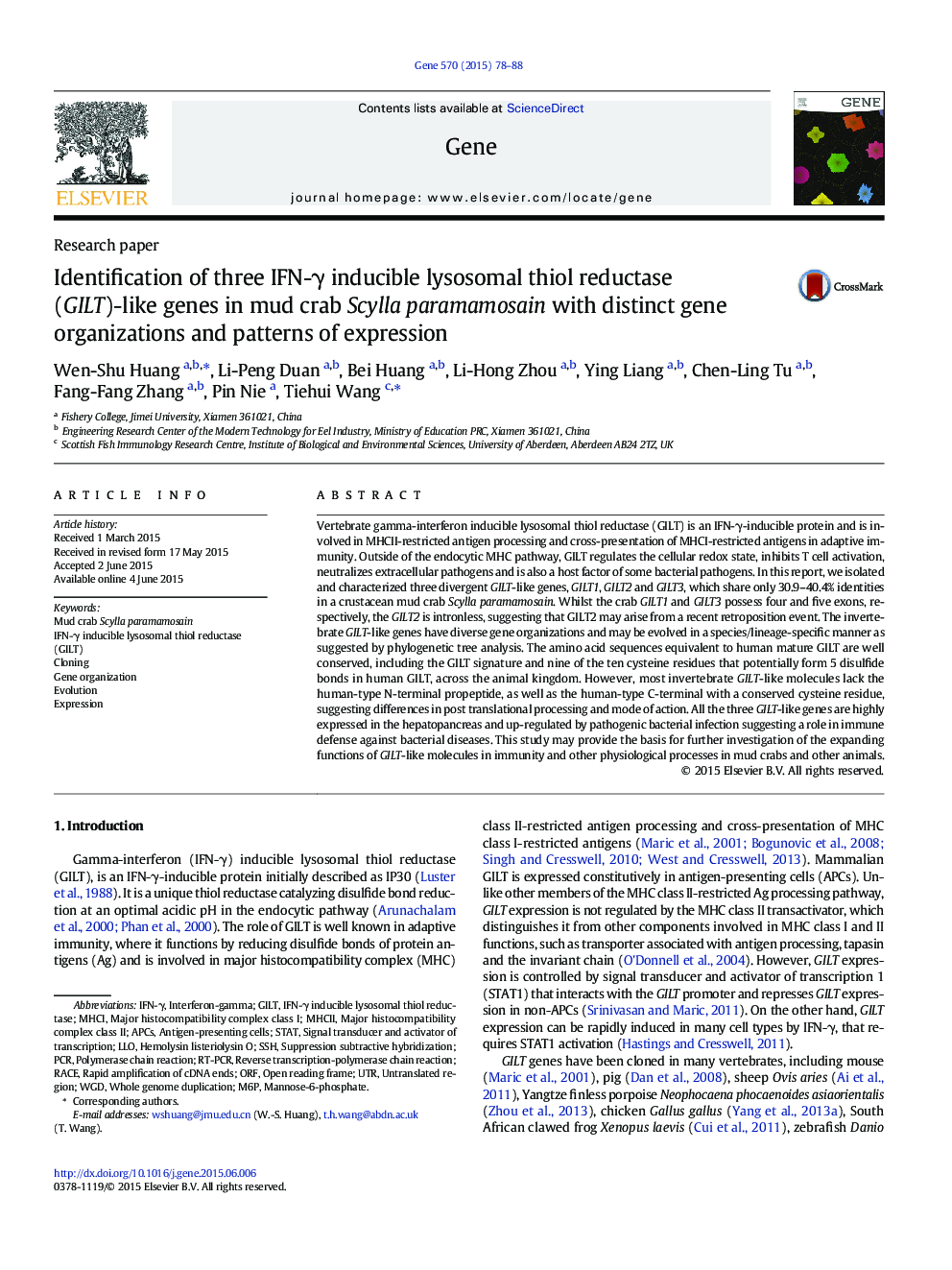| کد مقاله | کد نشریه | سال انتشار | مقاله انگلیسی | نسخه تمام متن |
|---|---|---|---|---|
| 5905368 | 1159880 | 2015 | 11 صفحه PDF | دانلود رایگان |

- 3 divergent GILT genes, GILT1, 2 and 3, have been cloned in an arthropod mud crab.
- GILT2 is intronless, GILT1 and GILT3 are separated by 3 and 4 introns, respectively.
- The expansion of arthropod GILT genes is species/lineage-specific.
- Mud crab GILT genes are differentially expressed in tissues and during development.
- GILTs are highly expressed and up-regulated in hepatopancreas by bacterial infection.
Vertebrate gamma-interferon inducible lysosomal thiol reductase (GILT) is an IFN-γ-inducible protein and is involved in MHCII-restricted antigen processing and cross-presentation of MHCI-restricted antigens in adaptive immunity. Outside of the endocytic MHC pathway, GILT regulates the cellular redox state, inhibits T cell activation, neutralizes extracellular pathogens and is also a host factor of some bacterial pathogens. In this report, we isolated and characterized three divergent GILT-like genes, GILT1, GILT2 and GILT3, which share only 30.9-40.4% identities in a crustacean mud crab Scylla paramamosain. Whilst the crab GILT1 and GILT3 possess four and five exons, respectively, the GILT2 is intronless, suggesting that GILT2 may arise from a recent retroposition event. The invertebrate GILT-like genes have diverse gene organizations and may be evolved in a species/lineage-specific manner as suggested by phylogenetic tree analysis. The amino acid sequences equivalent to human mature GILT are well conserved, including the GILT signature and nine of the ten cysteine residues that potentially form 5 disulfide bonds in human GILT, across the animal kingdom. However, most invertebrate GILT-like molecules lack the human-type N-terminal propeptide, as well as the human-type C-terminal with a conserved cysteine residue, suggesting differences in post translational processing and mode of action. All the three GILT-like genes are highly expressed in the hepatopancreas and up-regulated by pathogenic bacterial infection suggesting a role in immune defense against bacterial diseases. This study may provide the basis for further investigation of the expanding functions of GILT-like molecules in immunity and other physiological processes in mud crabs and other animals.
Journal: Gene - Volume 570, Issue 1, 1 October 2015, Pages 78-88